Back to: spinnerets
Forward to: sternites
Legs
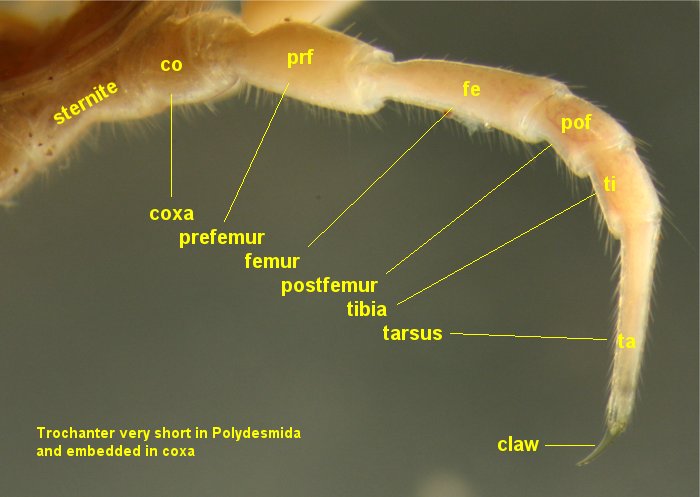
Tasmanopeltis grandis (Dalodesmidae), Tasmania
Every leg in millipedes is made up of seven components, called podomeres. The first is the coxa (see image above), which is attached to a sternite. The second podomere, the trochanter, is greatly reduced in Polydesmida; it is embedded in the coxa and is only just visible (not labelled above). The remaining five podomeres are the prefemur, femur, postfemur, tibia and tarsus. At the distal end of the tarsus is a single large claw.
Legs in Polydesmida vary greatly in overall length (images below). On any one individual, leg 1 is usually the smallest, and leg 2 is usually the next smallest.
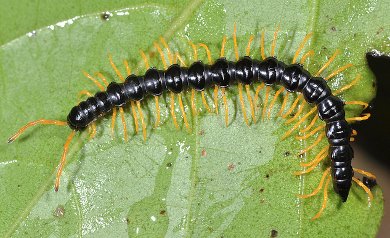 |
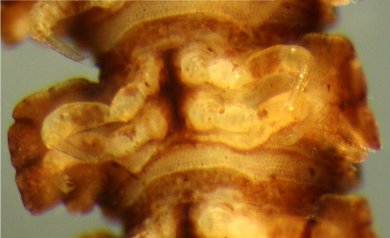 |
Long legs! |
Short midbody legs, covered by paranota |
The podomeres differ in their relative lengths from species to species. These relative lengths are often described by ranking them, as with antennomeres, but the coxa and claw are left out. For example, the Tasmanopeltis grandis leg at the top of the page would be described as tarsus>femur>prefemur>(postfemur, tibia). Numerical ratios can also be useful; for example, in the T. grandis leg the tarsus is 1.2X as long as the femur.
As with antennomeres, some Polydesmida specialists like to give absolute podomere lengths (in millimetres). Whether you report relative or absolute podomere lengths, it is good practice to say which leg you were looking at, because podomere lengths and proportions will vary from ring to ring on a single animal.
Legs in Polydesmida, usually in males, may be swollen (see the sex differences page) or bear special setae or unusual outgrowths. For example, leg 1 in Paradoxosomatidae often has a spine-like growth on the femur called an adenostyle (below).
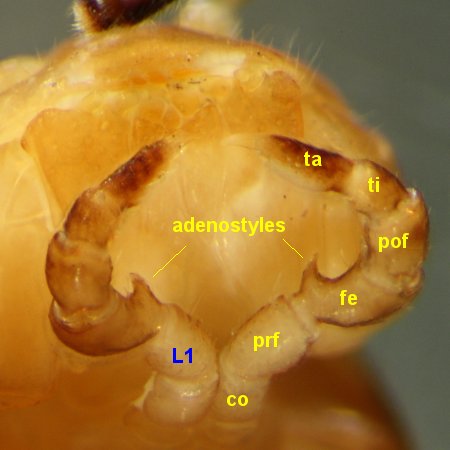
Somethus tasmani (Paradoxosomatidae), Tasmania
In all adult males, leg 2 carries the outlet of the male reproductive system, usually as a hole called the gonopore near the distal end of the coxa (below).
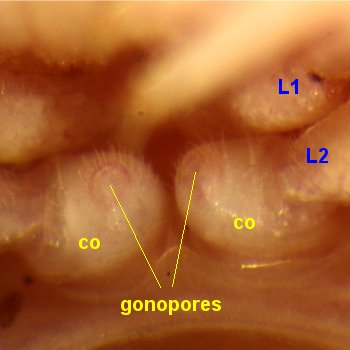 |
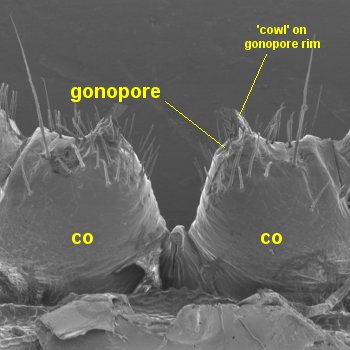 |
Leg 2 coxae, ventral view |
Leg 2 coxae, posterior view |
Back to: spinnerets
Forward to: sternites
